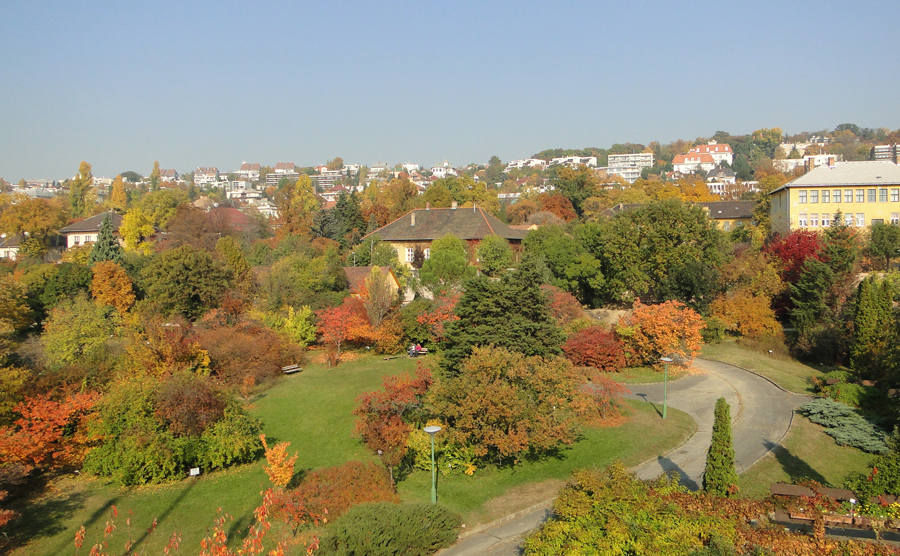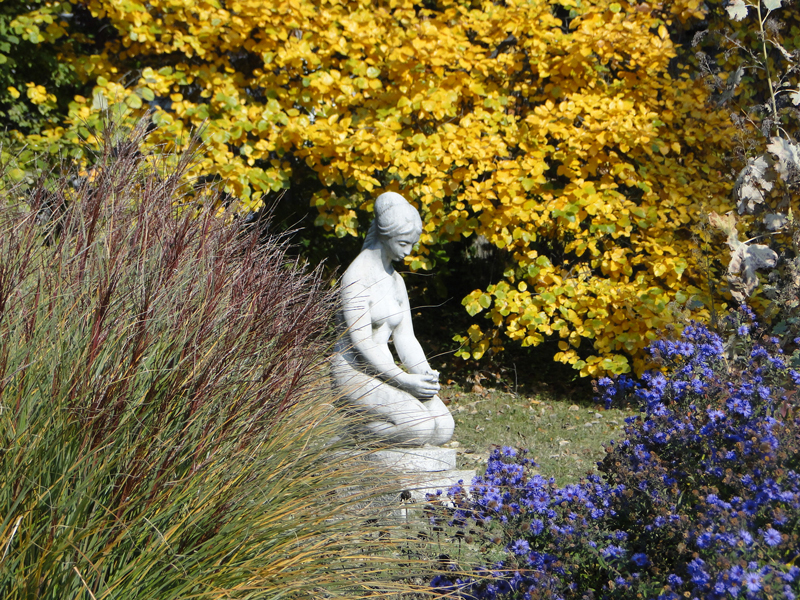General Information
Patron of the Conference
HE Dr. János ÁDER - President of the Republic
Conference Date
9-11 October, 2017
Conference Venue
Szent István University, Buda Campus (1118 Budapest, Villányi út 29-43.)

The Buda Campus in the middle of a megapolis – for more than 160 years, the Campus has served as important knowledge center for the Hungarian horticultural science and gardening.

A brief history of the Buda Campus in Budapest
For more than 160 years, the Buda Campus has served as important knowledge center for the Hungarian horticultural science and gardening.The rich and long history of the high school dates back to 1853, when the School for Practical Gardening was established by Ferenc Entz. The curricula were said to be unique and up-to-date in the area, when the theoretical courses started and were supported by the indispensable practical training. The school had become famous soon, favoured and supported also by the government, later being advanced to the rank of Royal School of Horticulture in 1894, with three years of training. Since the 19th century, the standards of education have been continuously increased, along with its structure and name, University of Horticulture, later on as Faculty of Horticulture and currently as Faculty of Horticultural Science belonging to the Szent István University with three faculties. Surrounded by the magnificent Buda Arboretum the Campus has always been represented a long and prestigious tradition in the agricultural higher education with a unique and interdisciplinary profile in the fields of horticulture, landscape architecture and food industry. Generations graduated here have become leading experts of the Hungarian agronomy having the mission to integrate tradition and innovation in horticulture, sustainable landscape management and producing high food quality serving people’s well-being and public health.
The three faculties of the Buda Campus owns two famous arboretums and one botanical garden. The more than 200 years old Szarvas Arboretum established on the floodplain area of the Kőrös river, in the south-eastern lowland area of Hungary preserves more than 1600 woody taxa and up to 250 perennial plant species. The Soroksár Botanical Garden in the outskirts of Budapest is famous for its remnants of the original Pannonian forest-steppe vegetation.

The Buda Arboretum
The rich plant collection of the Buda Arboretum surrounding the faculty buildings was established on the southern side of the Gellért hill, on the sunny slopes with the characteristic mild, submediterranean climate. Once being occupied by famous vineyards that were destroyed by the epidemic outbreak of the phyloxera, the Arboretum was initiated in the winter of 1893/94, on 3 hectares of the premises of the Royal Horticultural School (the predecessor of the present University). At the present, it covers 7,5 hectares and is surrounded by the constantly growing city of Budapest. The site situated near the foot of the 235 m high Gellért hill has a yearly precipitation of 600-620 mm, to which 150-200 mm of irrigation water is added during the vegetation period. The soil is a strongly eroded humus carbonate or a brown wood soil, or, in most cases, only the subsoil consisting of lime and clay. The content of active calcium is high (8-11 %), and the pH is alkaline, around eight.
Because of the sheltered position and the urban climate, the summer is hot and the winter is mild. The late frosts in May and the early freezes in October, so typical for most of Hungary, are not present here, which means a prolongation of the growing season with 3 to 5 weeks both in the spring and in the autumn.
The original vegetation was probably a mixed karstic scrub forest (Ceraso mahaleb-Quercetum and Orno-Quercetum) occupying the southern slopes of similar hills, with some elements of mixed floodplain hardwood forest (Fraxinopannonicae-Ulmetum) coming up from the former floodplain of the Danube at the foot of the hill.
Plant material of the Buda Arboretum includes over 1900 woody species and cultivars, more than 250 taxa of bulb-flowers and 300 different perennial species. Besides all the woody ornamentals available from nursery production in Hungary, all the Hungarian-bred cultivars and many clones are represented, the latter being selected for tolerating extreme (dry and polluted) environmental conditions. The unique microclimate offers possibilities for growing plants of subtropical origin, which not only successfully overwinter in the open, but also produce flowers and viable seeds.
Official Language
The official language of the conference is English.
Russian language interpretation is provided upon a certain minimum number of participants with obvious Russian language demand.
Host
Hungarian Association of Arboreta and Botanic Gardens (HAABG)
w3.mabotkertek.hu
Scientific / Programme Committee
Chair: Attila BORHIDI, Member of the Hungarian Academy of Sciences
Co-chair: Géza KÓSA, Head of the National Botanic Garden Vácrátót, President of the HAABG
Secretary: Mária HÖHN, Szent István University
Members:
Dr. János PODANI, MoHAS
Dr. Tamás PÓCS, MoHAS
Dr. Zsolt DEBRECZY
Dr. István ISÉPY
Dr. Erzsébet MIHALIK
Dr. Katalin HANYECZ
Dr. László ORLÓCI
Dr. István RÁCZ
Dr. Magdolna SÜTÖRINÉ DIÓSZEGI
Dr. Ábel LÁSZLÓ BENCSIK
Dr. Erika PÉNZESNÉ KÓNYA
id. László PAPP
Dr. Sándor László BARABÁS
Dr. Ákos POTTYONDY
Vince ZSIGMOND
Organising Committee
Chair: Vince ZSIGMOND, Secretary General of HAABG
Members:
Géza KÓSA
Dr. László ORLÓCI
Antal RADVÁNSZKY
Dr. Mária HÖHN
Dr. Erika PÉNZESNÉ KÓNYA
Dr. Katalin TAKÁCS
Zita GÓDORNÉ HASENAUER
Ildikó BENYHE
Beáta GOLOVANOVA
Anikó BÉLTEKINÉ GÁL
Event Secretariat
CongressLine Ltd.
Ms. Bea GOLOVANOVA
H-1065 Budapest, Révay köz 2.
Phone: +36 1 429 0146
Fax: +36 1 429 0147
E-mail: golob@congressline.hu
www.congressline.hu
